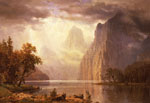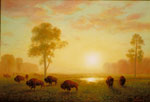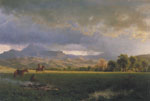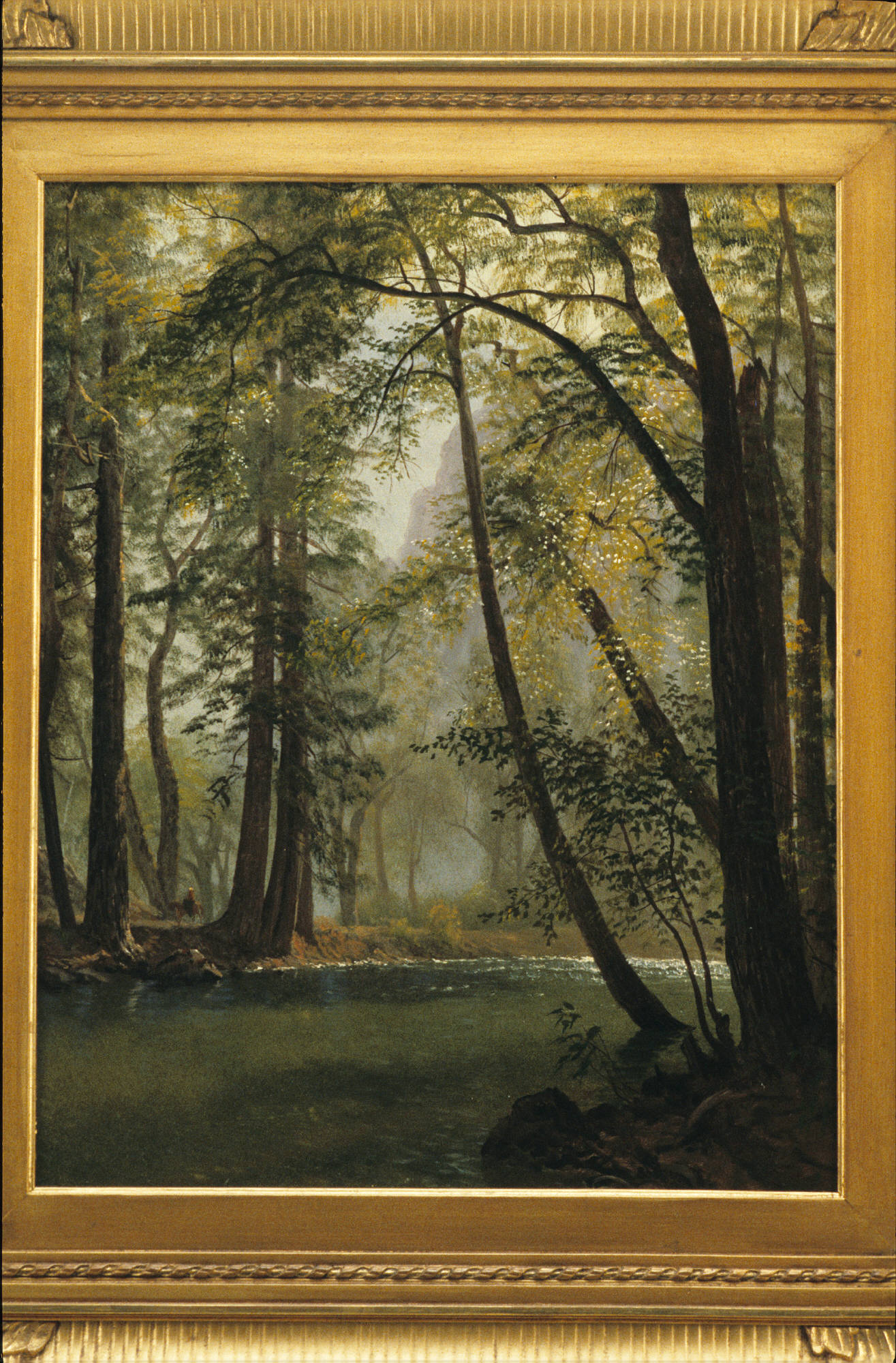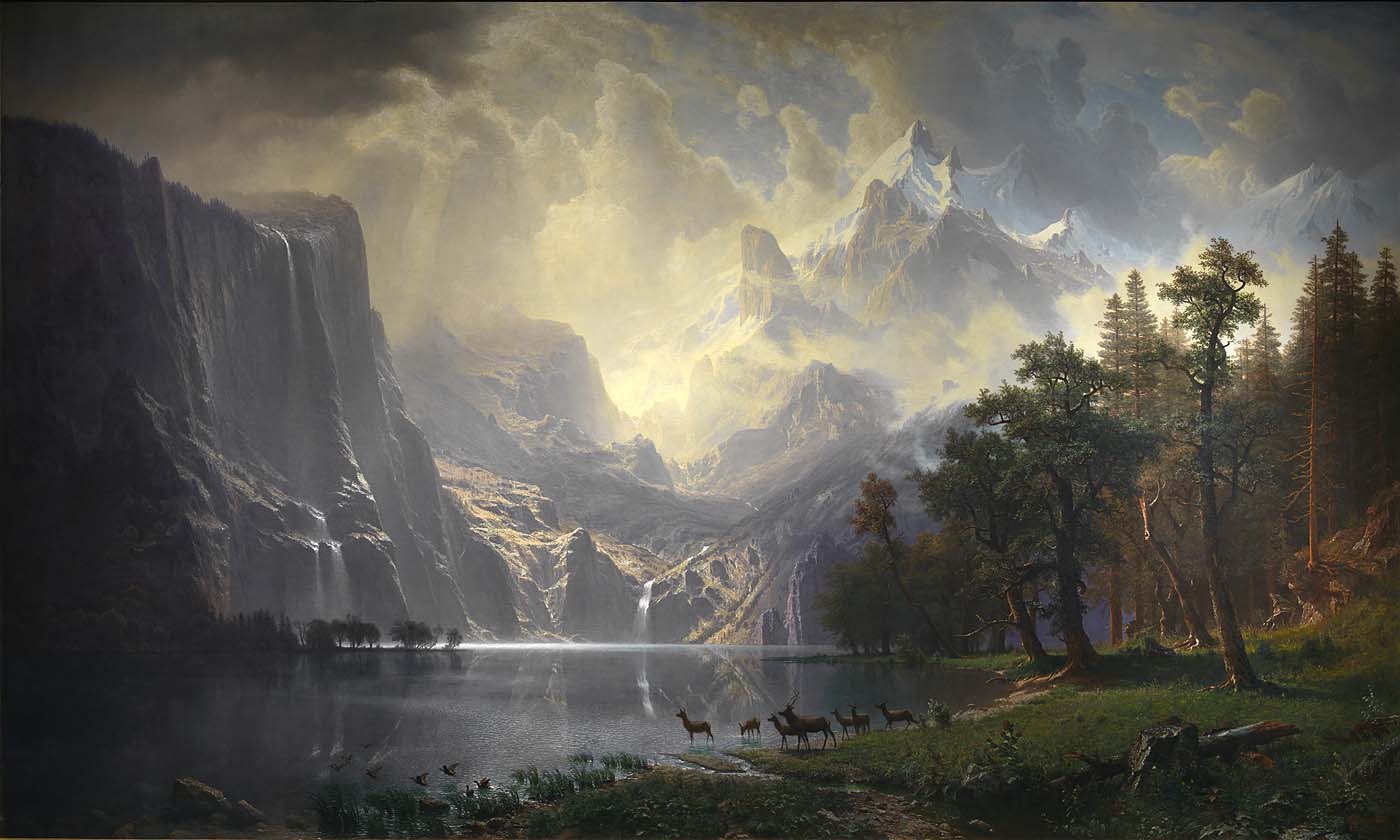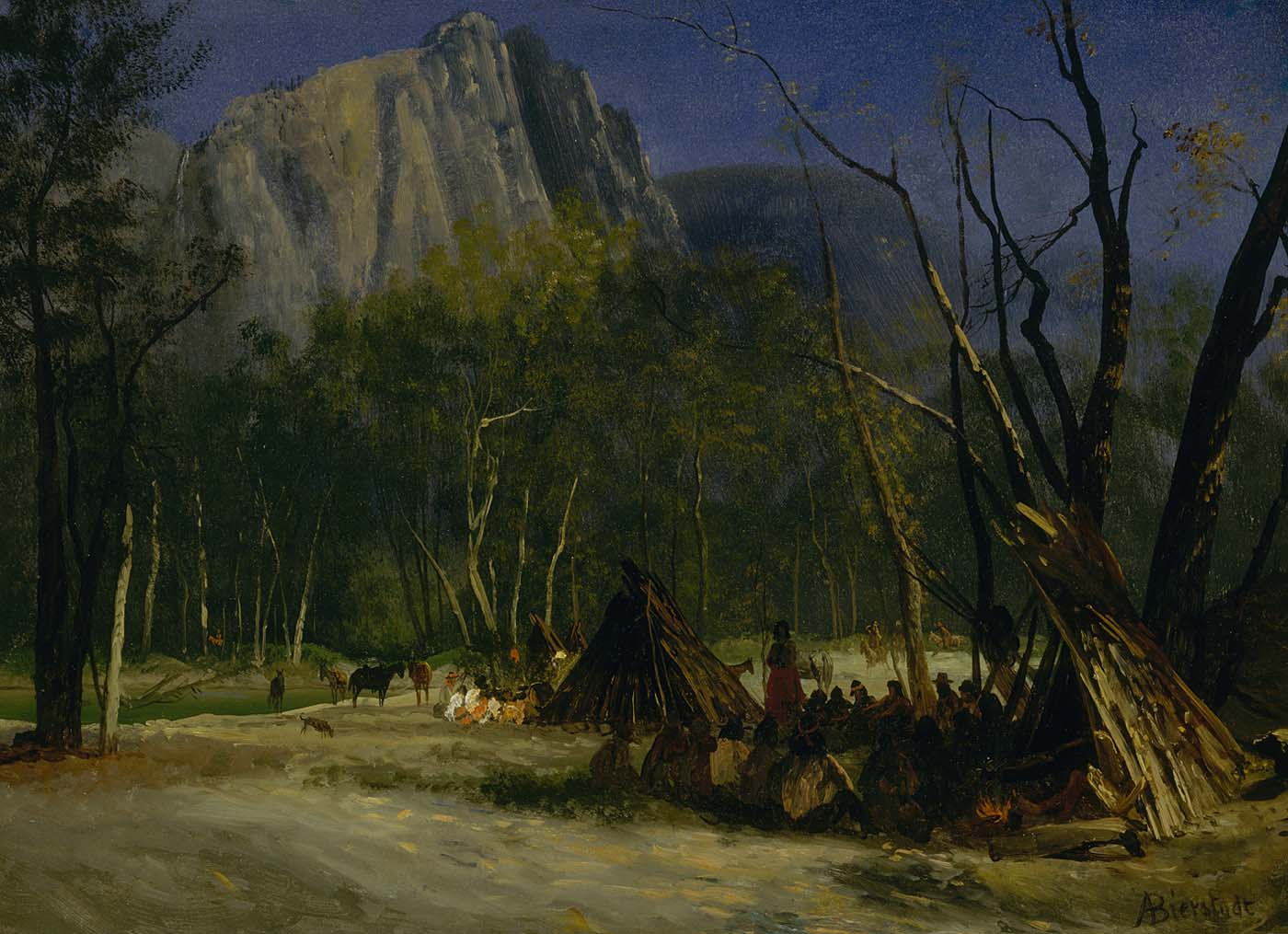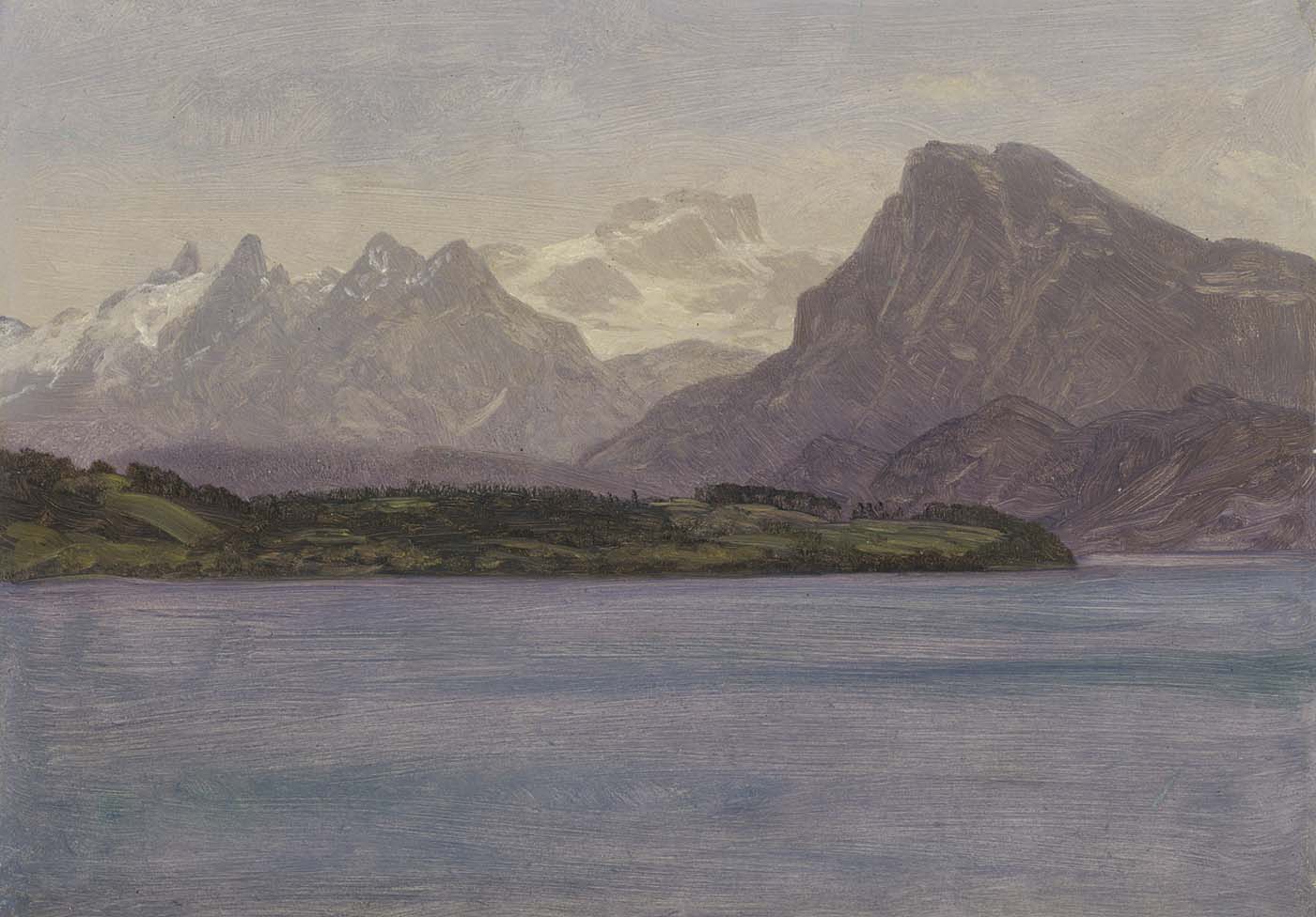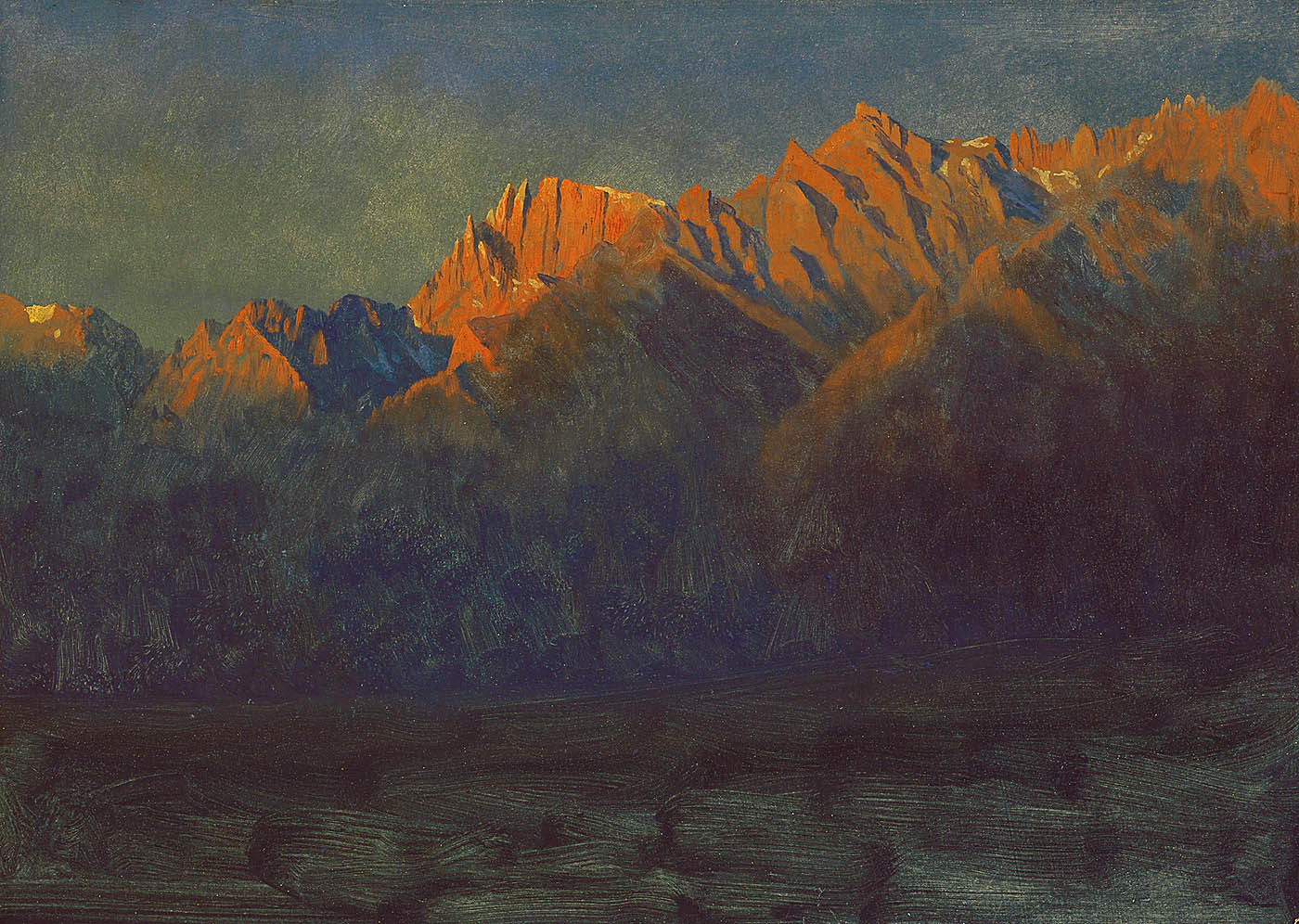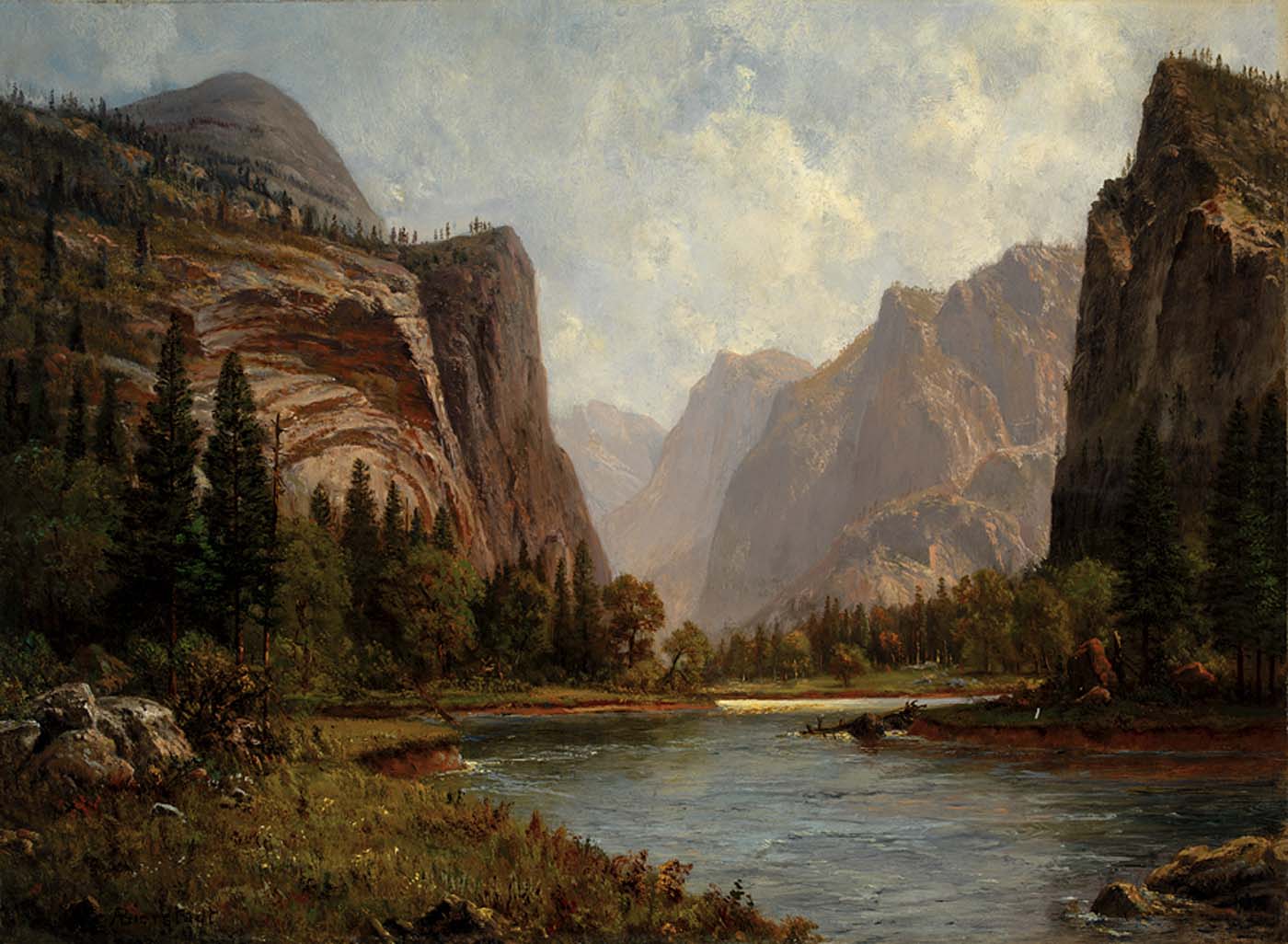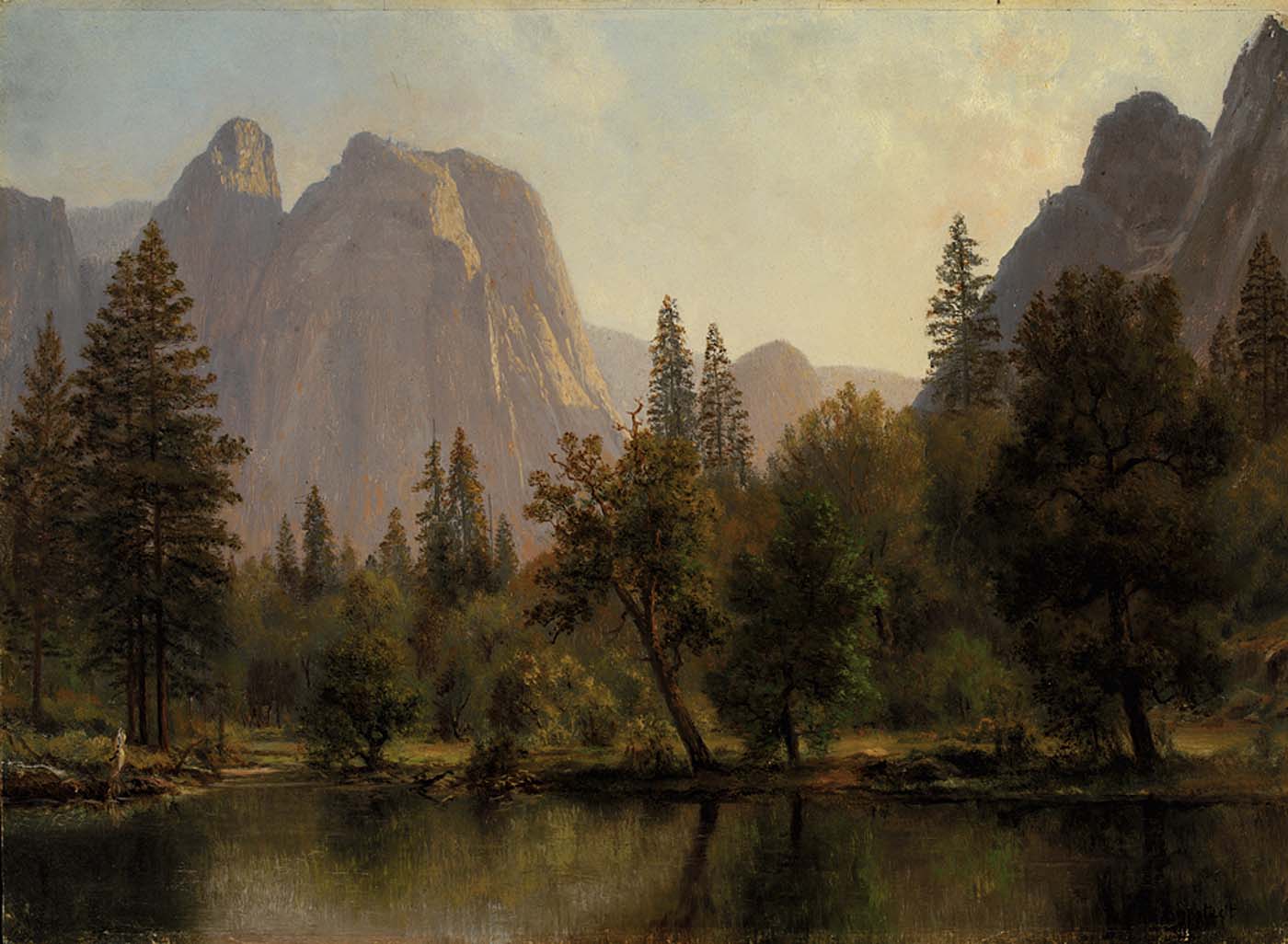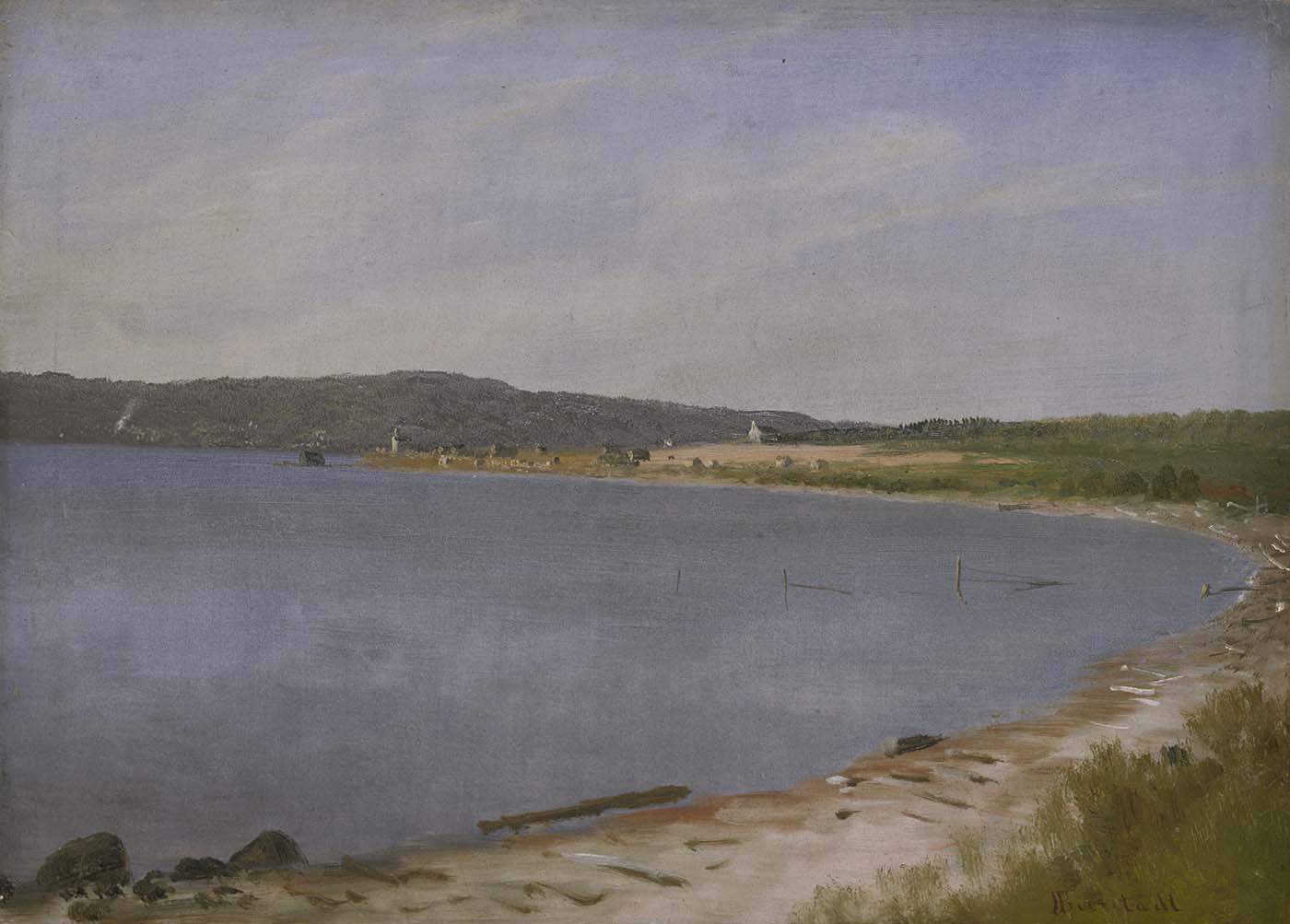Albert Bierstadt
Bierstadt and his family left Germany when he was two years old. With early ambitions to become a painter, he taught drawing in New Bedford, Massachusetts, then in 1853 returned to Germany, where he shared studio space in Dusseldorf with Emanuel Leutze and Worthington Whittredge. On his first trip to the West in 1859 Bierstadt traveled from Saint Joseph, Missouri, to the Wind River Mountains with Colonel Frederick W. Landers's Honey Road Survey. In 1860 he exhibited Base of the Rocky Mountains (unlocated) at the National Academy of Design. In 1863 he traveled to San Francisco and on to Yosemite. Highly regarded by local patrons and painters, his work commanded top prices. In 1871 he returned to California, where he stayed two years, painting views of the Sierra Nevada, including Yosemite. Through the mid-1880s he traveled in the West as well as to Nassau and Europe. His last trip west was in 1889. Changing tastes in the 1880s brought a decline in the popularity of his art, and he narrowly avoided bankruptcy in 1895.
References
Nancy Anderson and Linda Ferber, Albert Bierstadt: Art & Enterprise (New York: Hudson Hills for the Brooklyn Museum, 1991); Hendricks, Bierstadt.
William Truettner, ed The West as America: Reinterpreting Images of the Frontier, 1820–1920 (Washington, D.C. and London: Smithsonian Institution Press, 1991)
Selected Images of Albert Bierstadt
Objects at Colby College Museum of Art (1)
Objects at Dallas Museum of Art (1)
Objects at The Walters Art Museum (1)
Objects at Crystal Bridges Museum of American Art (2)
Objects at Autry Museum of the American West (3)
Objects at Indianapolis Museum of Art at Newfields (3)
Objects at Princeton University Art Museum (3)
Objects at Archives of American Art (4)

Objects at Smithsonian American Art Museum (7)
Objects at The Amon Carter (7)
Objects at National Museum of Wildlife Art (12)
Objects at Gilcrease Museum (25)








